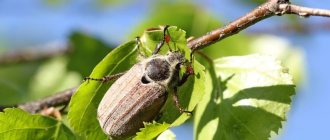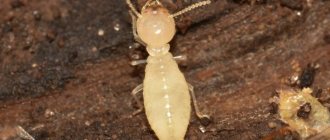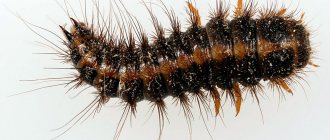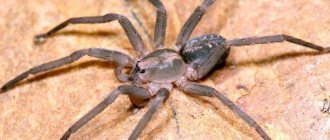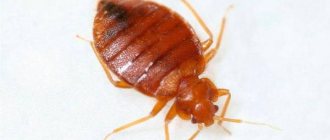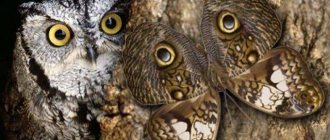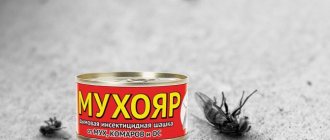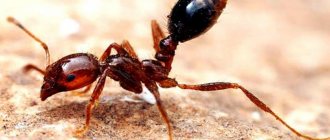07/13/2017 Maria Ivanova 0 comments
The May beetle belongs to the genus May beetles, the subfamily Khrushchi, the family Lamellaridae, and the order Coleoptera. The cockchafer is an arthropod insect. This insect got its name from the month when it actively begins to develop. It is at the end of spring that the cockchafer begins its life cycle.
- 1 What does a cockchafer look like?
- 2 Bronzovka, or green May bug
- 3 Life cycle of the cockchafer
- 4 What do cockchafers eat at home?
- 5 Fighting the cockchafer
- 6 Benefits of the cockchafer
- 7 How to catch chub using a cockchafer?
- 8 Dream Interpretation May Beetle
What does a cockchafer look like?
An adult insect reaches a length of 3.5 centimeters. The body of the cockchafer has an elongated oval shape and is black or brown in color. The beetle has 2 double wings, which are attached to the chest. There are 3 pairs of legs. The body of the cockchafer consists of a head, chest and abdomen, which are covered with protective chitin. The abdomen consists of 8 segments, the chest - of 3 segments.
The elytra protect the hind wings. The head is small. May beetles in down jackets - this is exactly the picture that appears if you look closely at the insect. Its entire body is covered with numerous hairs.
The May Khrushchev has excellent eyesight thanks to its bulging eyes. Each eye consists of thousands of simple ocelli. There is one pair of antennae that perform an olfactory function. The cockchafer has a gnawing type of mouth.
How to protect potatoes from Khrushchev
Potato tubers are often affected by this pest. Severe contamination of the soil can lead to the complete destruction of the crop; in addition, the potatoes will not be stored, so all summer work will be wasted. Simple methods of combating the cockchafer will help prevent this.
How to get rid of larvae in potato beds:
- Combine annual digging of the soil with the selection of larvae.
- Plant beetle repellent plants between the rows.
- Pour a little dry mustard into each well.
- Plant green manure plants in the garden beds in the fall.
- Use chemicals for severe lesions.
The fight against cockchafers must be carried out methodically, using all possible methods. You should not assume that the absence of larvae last year will protect the crop for a long time, because new pests will not keep you waiting.
Bronzovka, or green May beetle
The cockchafer is often confused with the bronze beetle, which, unlike the hero of our article, is green.
The bronze beetle is not a May beetle, although these insects belong to the same family, that is, they are close relatives. The life cycle of a green insect from egg to adult is 2-3 years. The female bronze bird lays eggs very often in anthills. Bronzewort does not cause any particular harm, because it appears after the flowering of cultivated plants. It feeds on plant flowers and is listed in the Red Book.
The benefits and harms of the cockchafer
Insects can cause irreparable damage to plants in a short time. Moreover, if adult individuals eat the aerial parts: leaves, buds, catkins on conifers, then the harm from the larvae is much more widespread. They completely destroy the root system, and the plants have virtually no chance of recovery.
There are some benefits too. In folk medicine, recipes using them for treatment are quite popular:
- purulent processes;
- tuberculosis;
- injuries;
- radiculitis;
- scrofula;
- impotence.
There are known cases of positive reactions after the use of such drugs for cancer.
Life cycle of the cockchafer
The life cycle of the cockchafer is 3-5 years. Life cycle phases:
- egg stage (30-40 days);
- pupal stage (30-60 days);
- larval stage (3 years);
- stage of an adult insect, or imago (1 year).
The female begins to lay 20-30 eggs in the ground at the end of May. She carries out this procedure 3-4 times in the same place. After laying eggs, the female dies.
The eggs are found in the ground at a depth of 30 cm, they are white in color and have a diameter of 2.5 mm.
After 30-40 days the larvae hatch. They have a thick white body, 3 pairs of legs, and a head with well-developed jaws. The cockchafer larva develops for 3 years and overwinters underground. All this time she feeds on plant roots. In early August, the larva burrows deeper into the ground and turns into a pupa. An adult cockchafer insect develops from the pupa.
How is this parasite different?
The first feature that catches your eye is its gluttony. It is believed that its homeland is North America. He remained in the shadows for a long time until he began to rapidly destroy entire potato plantations. The pest is easy to distinguish from other similar parasites, since it grows up to 2 cm in length, and its body is covered with a shell of red or bright orange chitin. Until the 40s of the 20th century, this pest did not yet exist in Europe. He happily eats not only potatoes, but also tomatoes, eggplants, peppers, etc. As a rule, the greatest danger is posed by the larva of the cockchafer, which penetrates into the soil along with humus. After wintering, insects climb out of the ground to the surface in search of food. Insects wait out cold and frost at a depth of about half a meter, so fighting them is not easy.
With the arrival of spring, female cockchafers begin to lay eggs, after which larvae emerge from them, and they are quite voracious and eat everything that comes in their way. Externally, the larvae look like white caterpillars with many small legs. They live for about 4 years. The larvae are armed with quite powerful jaws, as a result of which they can destroy the root system of any tree, not to mention garden crops.
Somewhere in the height of summer, the larva begins to develop into a pupa, which resembles a real adult cockchafer. By autumn, the pupa turns into an adult, which overwinters in the ground at great depths. This allows the cockchafer to survive the harshest winters.
The persistence of this parasite is related to many factors . For example:
- In Europe, the cockchafer has practically no natural enemies, compared to its homeland.
- If there are no favorable conditions and there is not enough food, then the cockchafer can be in a state of suspended animation for 3 years. After this period, the parasite is able to come to life and begin its “violent” activity.
- Female insects lay eggs at great depths, so no agricultural measures can affect this process. Therefore, the destruction of such pests must be carried out during the period of their active life.
- The cockchafer has strong wings, so it can easily fly a distance of 10 km. As a rule, they migrate in entire colonies in search of food. At the same time, they capture significant territories.
- To destroy this parasite in a vegetable garden or garden plot, you need to put in a lot of effort and money.
Despite this, many effective means have been developed that can cope with the invasion of the cockchafer. At the same time, it must be remembered that chemical control agents require special protective equipment, otherwise they can harm humans, although in our time drugs with minimal toxicity are produced.
Interesting! The favorite delicacy of cockchafer larvae is the root system of garden strawberries or wild strawberries. If you notice that strawberry bushes have begun to fade just like that, without obvious reasons, then you need to dig them up immediately. As a rule, the larva of the cockchafer is also located here. If you don’t do this, the larvae will simply mow down every single bush, not a large plantation of this delicious and healthy berry.
Fight against cockchafer larvae.
What do cockchafers eat at home?
Adult cockchafers mainly feed on leaves, flowers and shoots of trees and shrubs (currants, gooseberries). Among the trees they prefer are apple, plum, cherry, oak, birch, rowan, maple, etc.
But the larvae cause damage to plants, especially in the second year of life. The larvae are very voracious and feed on the roots of fruit crops: carrots, strawberries, potatoes, beets, corn, etc.
But beetles practically do not live at home, since it is extremely difficult to replicate the natural atmosphere. However, this does not bother many children and keeps it in a jar or matchbox.
Mechanical methods of struggle
Catching flying, adult beetles is not very difficult and is the most effective (at this stage) and reasonable. This can be done as follows.
Light traps
A light source is placed in a container coated from the inside with a viscous substance, such as grease. In calm weather it can be a candle. Late in the evening, when it gets dark, the trap is taken out into the garden and the lights are turned on. The beetles will flock to the light and get stuck in the thick substance.
Sticky paper
Newspapers are well suited for this; on one side they need to be coated with any non-drying adhesive composition. Then they are laid out on the beds (a particularly good “harvest” can be collected from strawberries) or hung on trees.
Collecting larvae by hand
Fighting Khrushchev caterpillars is much more difficult than fighting flying individuals.
Their mechanical collection is long, labor-intensive and must be done in an area free from crops in the warm season, before they go to the depths for the winter.
When digging a plot in the summer, most of them can be found and collected at a depth of 10-20 cm.
However, some of them live much deeper, up to 0.5 m, and getting to them with a shovel is much more difficult.
Sodding an area with white clover
The method is based on the fact that soil nitrogen is destructive for Khrushchev. Therefore, planting plants that actively accumulate nitrogen from the air and synthesize it into the soil is an effective method of pest control. In particular, such a plant is white clover.
For fruit crops, nitrogen, on the contrary, is very useful and has the ability to increase the yield and quality characteristics of fruits. In particular, experienced farmers recommend planting white clover around the trunks of fruit and berry trees and shrubs. A bonus is that clover inhibits the growth of weeds and makes the soil more fertile.
Video tips
Help from insectivores
First of all, these are birds, for example, starlings. You can attract them to your site by building birdhouses. The risk of birds damaging crops can be mitigated in other ways, but there will be significantly fewer pests in the surrounding area.
It is especially good if hedgehogs settle on the site, who know how to hunt and love to feast on the beetle and its caterpillars, finding them in the ground. You don’t need to try too hard to attract hedgehogs; our dachas are a wonderful home for them. The main thing is not to interfere with their life and reproduction, maintain silence, and sometimes feed these garden workers.
Fighting the cockchafer
With the onset of warm weather, May beetles actively begin to eat leaves and shoots of trees. More terrible than the larvae of the cockchafer - they eat the entire root system of the plant in the ground, and it dies.
Preparations to combat the cockchafer and its larvae:
Zemlin;- Nemabact;
- Aktara;
- Antikhrushch.
Traditional methods of struggle:
- shaking off trees;
- use of birds (chickens, starlings);
- You can hang a white canvas and illuminate it with bright light. May beetles will crawl onto the canvas;
- plant white clover or lupine where you want to kill the larvae.
Fighting cockchafer larvae on strawberries: strawberries are treated with a solution of onion peels (100 g per 10 liters of water).
Saving strawberries from the cockchafer
Khrushchev larvae most often cause damage specifically in strawberry plantings.
The vegetation cycle of this plant is approximately 4-5 years, during which the soil is not completely dug up, so the risk of pests is very high. Voracious worms destroy plantings very quickly. To prevent the crop from being damaged, you can use the following recipes.
Effective ways to protect strawberries from beetleworm:
- Plant plants that repel cockchafers between the rows. These are fragrant marigolds, white clover, cabbage, radishes (radishes) or onions.
- Mulching the soil in the beds repels females, preventing them from laying eggs. For this, sawdust from coniferous trees, straw or dry pine needles are used.
- Periodically, plantings can be sprayed with a weak solution of potassium permanganate, as well as an infusion of onion peels.
- Change the planting site when updating the crop. It is better to allocate a different place for strawberries each time, carefully digging and treating the planting site with insecticides. Until the period of fruiting of young plants, there will be no trace of chemical compounds left, and the soil will be disinfected from larvae and eggs for at least a year.
- Prepared solutions of insecticides can be spilled between the rows, providing protection from pests, and folk recipes can be used directly on the beds themselves.
When planning to transplant bushes, be sure to check the soil; usually the larvae are located at a depth of 30-40 cm from the surface. Digging allows you to get rid of the bulk of the larvae, and the methodical destruction of adult beetles in the spring prevents the appearance of new insects.
How to catch chub using a cockchafer?
But for fishermen, May beetles are a real value, because they can be used to catch some species of fish. Catching chub with a cockchafer occurs as follows. We cast the fishing rod, lower the line and wait for the bite. The bait should not move...
You will quickly feel the bite and hook. But don’t rush to pull out the chub, let him walk with the bait. Chub is a good catch using a cockchafer wobbler. The cockchafer wobbler is an artificial but effective bait.
Danger level of the cockchafer
The beetle's danger level is quite high. Presence of 1 larva per 1 sq. m area is the threshold of harmfulness of the cockchafer. A survey of forest and park lands, garden plantings in some regions recorded the presence of 2 - 3, and near forest belts - up to 20 or more larvae per square meter. m.
Under favorable conditions, there is a rapid increase in the number of the pest and a period begins, after about 20-25 years, of mass flight, which lasts up to 3-4 years. An approximately 10-year break is necessary for cockchafers to intensify reproduction before the start of the next mass flight with the capture of new areas.
